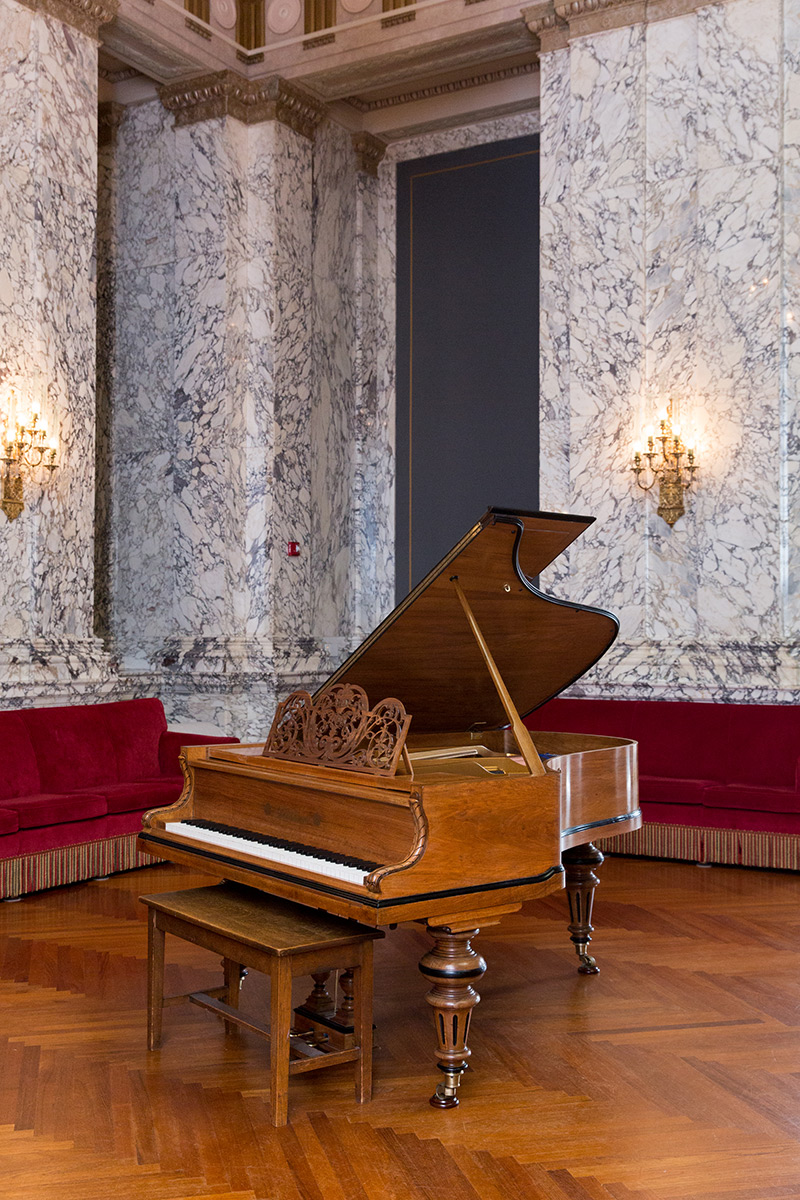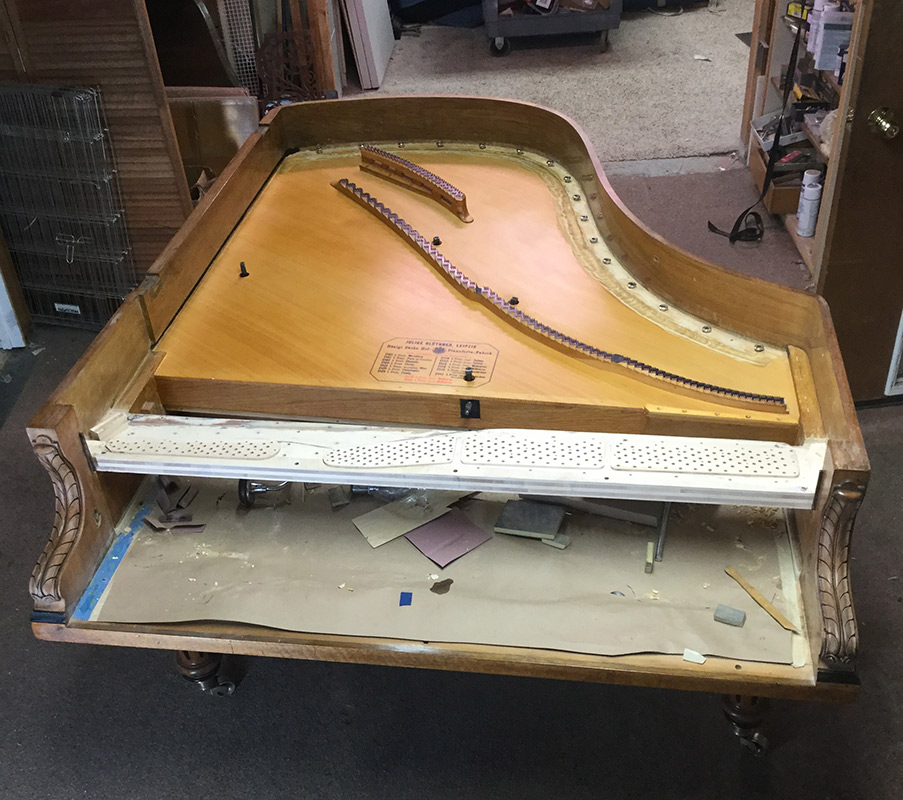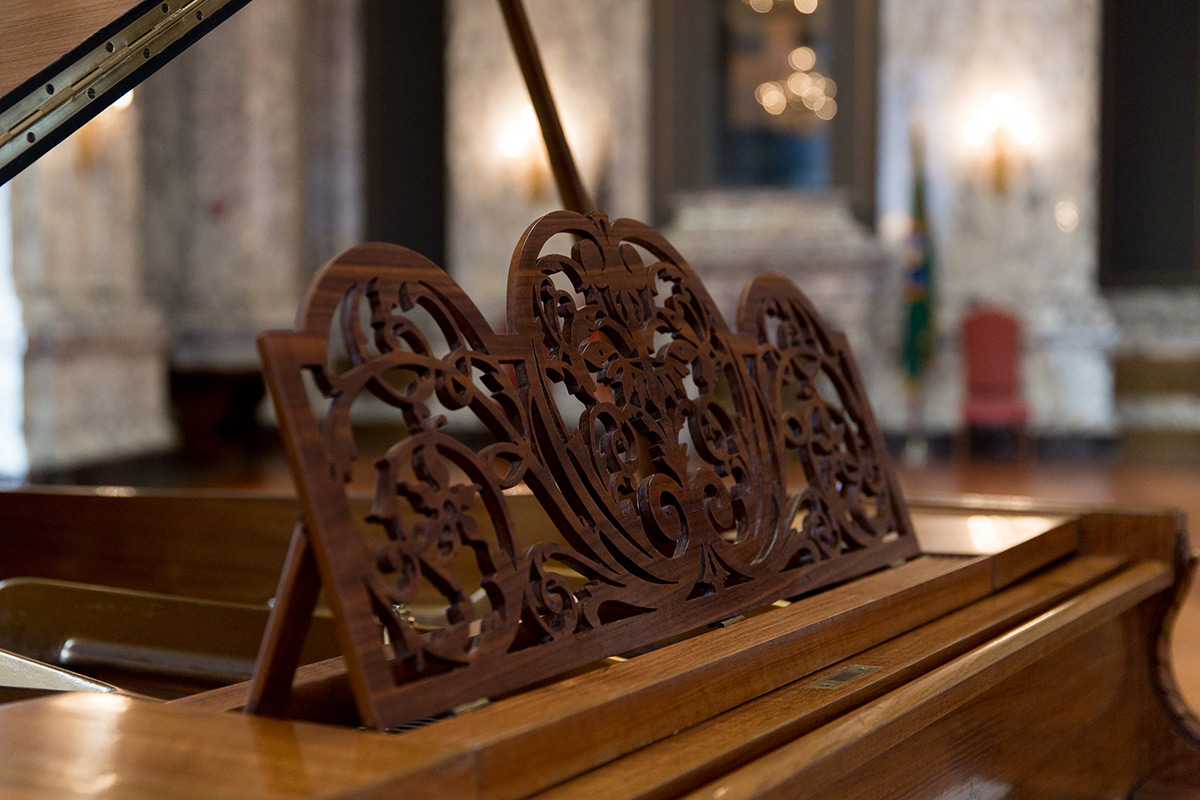Moldenhauer Blüthner piano
Learn about this historic piano and its restoration in 2017.

Blüthner
Blüthner is one of the 3 "B's" of German piano makers, alongside Bechstein and Bosendorfer. Made in 1893 in Leipzig, Germany, this is a 6-foot, 3-inch grand piano. Its furniture style spans the late 19th century. It has a light rosewood veneer with black accent moldings in the "empire" style. It has turned legs, a fret-work music desk, and carved acanthus leaf decorations on either side of the ivory keyboard.
Blüthner's designs were innovative, and this piano is no exception. Most grand pianos have a soft pedal that slides the keyboard sideways so that the hammers strike only 2 of the 3 strings per note. On this piano, the soft pedal moves the hammers closer to the strings so that there is less distance for the hammer to travel. To compensate for the feeling of "lost motion" in the keys, a steel bar lifts the back end of the keys.
Germany to Olympia
The Blüthner piano was a prized possession of musicologist and Spokane musical legend Dr. Hans Moldenhauer. In 1938, it made the trip with his young family from Germany, stopping in the Bronx, New York, before being transported across the United States to its home in Spokane, where it resided for nearly 50 years.
In 1990, the piano was presented to Washington as a gift from the Hans Moldenhauer Estate and placed in the State Reception Room of the State Capitol Building.
Restoration
After 27 years in public service, the piano needed restoration. Concern about its deteriorating condition had limited its use. The Capitol Furnishings Preservation Committee was informed of the piano's condition. In 2015, the Committee secured funding from the state Legislature for its restoration.
The goal of this restoration was to return the Moldenhauer Blüthner grand piano to as near its original aesthetic and performance condition as possible, regain a responsive keyboard and action, emit a sound that is beautiful and appropriate for the intended use, and have an appearance that is representative of decorative art furniture without appearing to be "new."
The restoration was completed in July 2017 by Ken Eschete of Bentside Arts in Spokane.
Before restoration

During restoration

After restoration

